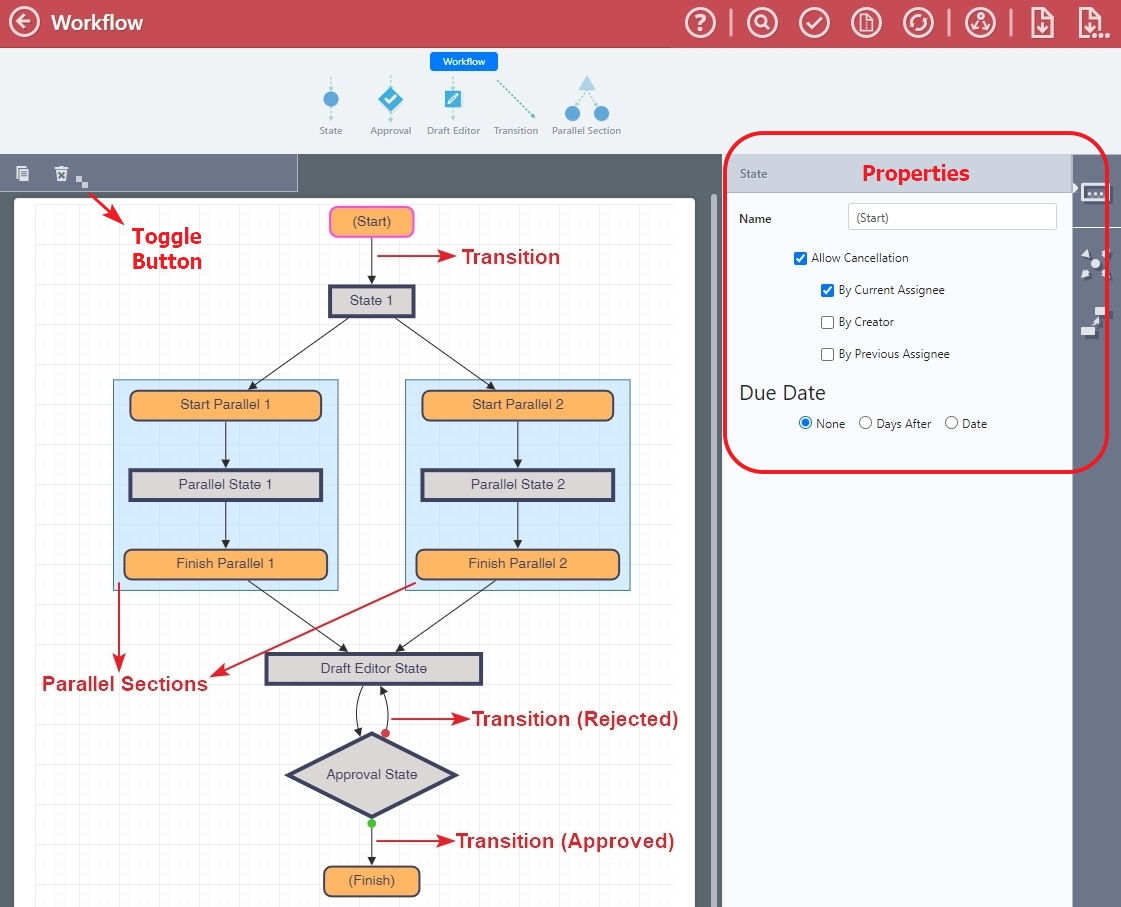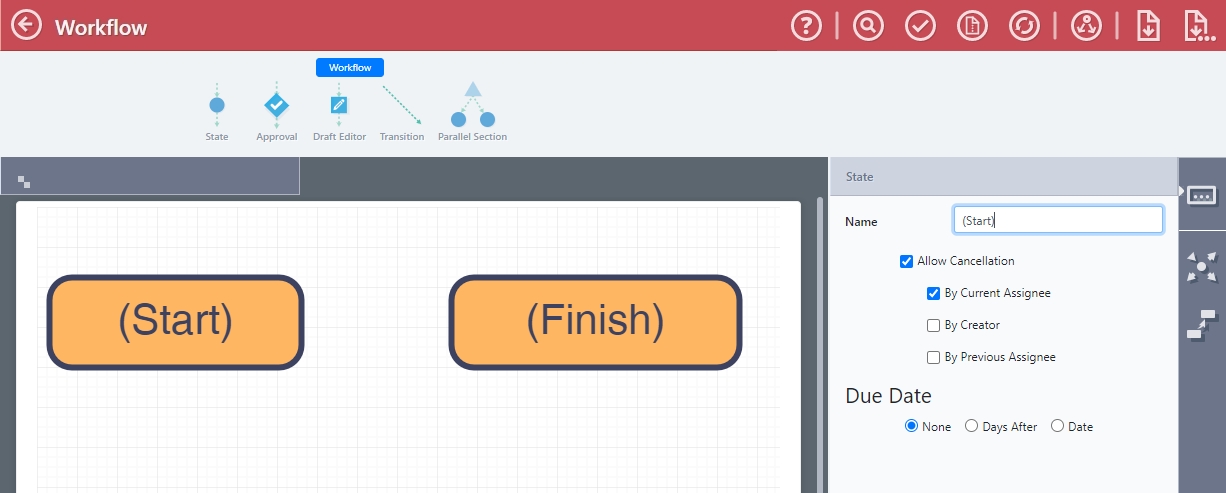Introduction
SmartIQ workflows are comprised of workflow states flowing from to another via transitions, completed sequentially or in parallel from start to finish.
A full workflow streamlines business processes, allowing different users to collaborate at different phases or times. This automation uses business logic to help organisations perform consistent business processes and improve organisational efficiency.
The workflow canvas shows the following:
- Diagram that provides a visual representation of the workflow
- Configurable properties for each state and transition
- Escalations and actions that can be added to the workflow

Workflow consists of the following:
-
States – A workflow state is a stage or step in the workflow process. This can be normal state or an approval state. The number of states added to a workflow determine the simplicity or complexity of the workflow. For more information, refer to Workflow States.
-
Transitions – A transition is the link between the end of one state and the beginning of another, creating forward (and backward) paths within a workflow. For more information, refer to Transitions.
-
Escalations – Escalation are actions triggered based on configurable conditions. For more information, refer to Escalations.
-
Parallel workflow – Parallel workflows allow workflow to work in parallel by assigning states to users simultaneously. Workflow will only progress once all concurrent states have been completed. For more information, refer to Parallel Workflows.
-
Approvals – Approval is a gateway in a workflow where the responses provided in the form can be reviewed and altered before progressing. For more information, refer to Approvals.
-
Draft Editor – Draft Editor in the workflow allows SmartIQ to combine its smart interview capability with the drafting and document generation features of SmartCOMM. For more information, refer to Draft Editor.
Other things to consider in Workflow are:
-
Email Approval – which only work for workflow approval projects. For more information, refer to Email Approval.
-
Track Changes – This features shows the history of who made a change when it was their turn. For more information, refer to Track Changes.
-
Actions – For more information, refer to Actions - Overview.
Usage
- To access the Workflow canvas, click this icon in the top menu.
- Referring to the state, transition, articles above, drag and drop the required workflow components onto the canvas.

Updated 8 months ago
